Nav
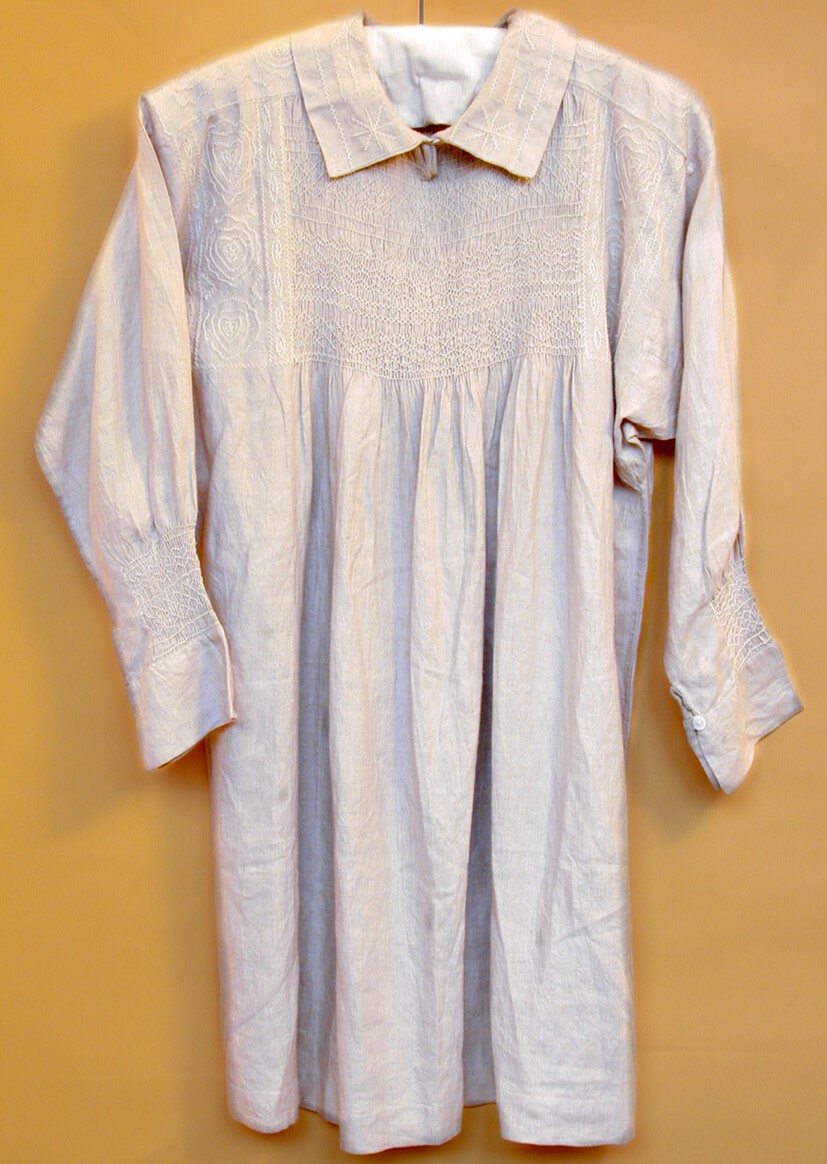
Clothes before the sewing machine
Before the invention of the sewing machine, clothes were created within ‘cottage industries’. This was a widespread pre-industrial manufacturing method which consisted of people making goods within their own homes.
It is easy to fall into the misconception that the women of the household would make the family’s clothes. However, this was not necessarily the case. Dressmakers, tailors and milliners were highly skilled craftspeople who guarded their secrets closely. Their skills were passed down from master to apprentice; sewing patterns did not become available to the public until the mid-19th century. Many women did have basic sewing skills, but these would be focused on repairing clothes and making undergarments.
Hand sewn smock, 83/20

Clothes shopping with cottage industries
By the 18th century, cloth production had been widely mechanised. Therefore, your first step would be to visit a cloth shop and purchase your fabric. However, in a rural village you may have visited a local weaver and spinner to create your fabric for you.
You would then visit the local tailor or dressmaker to sew your clothes together. Fabric was expensive, so labour would typically be comparatively cheap. The process was anything but fast, with a blazer taking around fourteen hours of labour to make, and a shirt taking around ten hours. Once complete, the garment could be taken to a milliner to add additional accessories.
Sewing awl, MERL 56/99
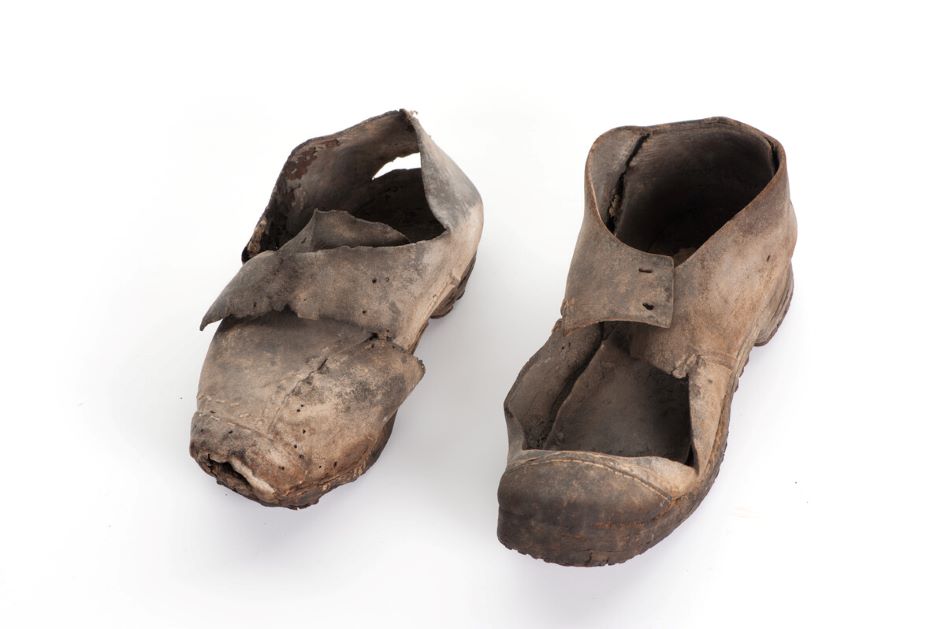
Mending over spending
Because of the high cost of fabric, clothes were not thrown away when they went out of fashion or no longer fit. Instead, they were taken back to the tailor or dressmaker to be repurposed. For example, trim could be altered, or the place where the waist hits could be changed.
Almost all surviving 18th century garments have been repurposed in some way. For example, these buckle shoes, which were worn on a farm in Shropshire, have been repaired repeatedly. Despite being a pair, there are noticeable differences between the two.
MERL 78/15 and 78/16
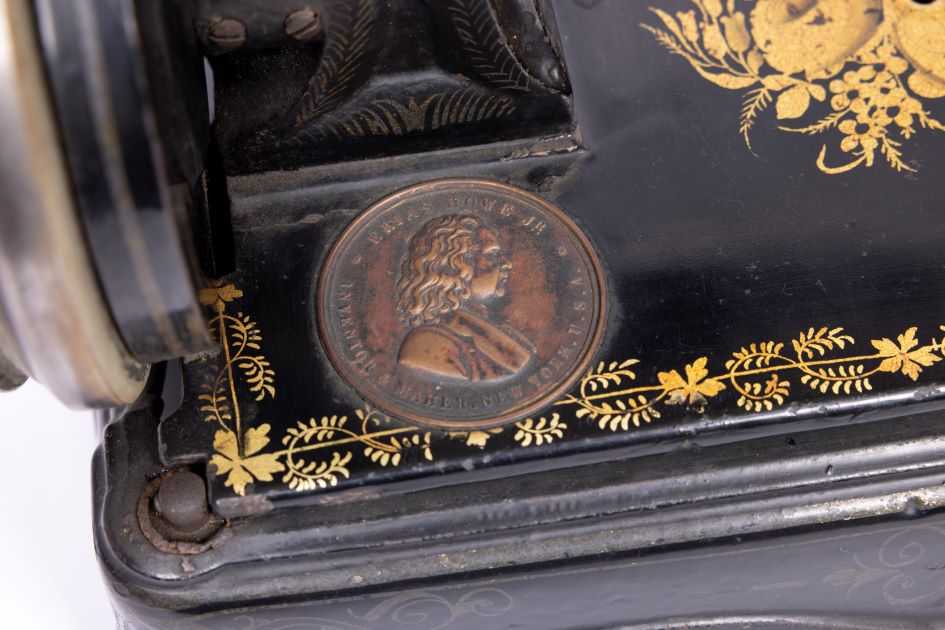
Invention of the sewing machine
Various attempts were made to mechanise sewing in the early 19th century. The first to differentiate from hand sewing was Walter Hunt’s sewing machine in 1832, which sewed the first ever lockstitch. Hunt sold his invention to Elias Howe, who patented it in 1846. Several prominent companies began manufacturing machines in the USA in the 1850s, bolstered by high demand caused by the US Civil War.
To start, few machines were made by British companies due to the high cost of patents and a lack of companies dedicated to their manufacture. Most machines were imported from Germany or made by American companies on British soil.
Elias Howe Medallion, MERL 81/96
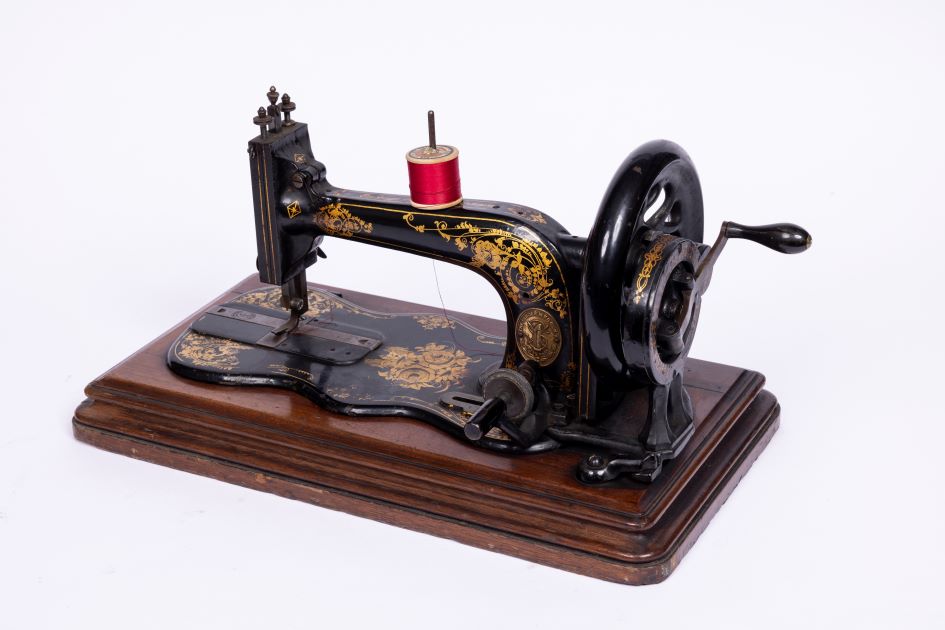
The household name of Singer
Established by American showman Isaac Singer in 1851, the Singer company turned the sewing machine into the world’s first mass marketed consumer good. They introduced concepts like hire purchase and part exchange for the first time, making their machines affordable for both families and tailoring companies.
The aesthetic qualities of sewing machines made them an essential part of domestic interior design. Much like Huntley & Palmers biscuit tins, they were ornamental and would be showed off to guests.
By 1912, 60% of American sewing machines were produced by Singer, and a staggering 90% of sewing machines in other countries were Singer models. By this time, Singer was the seventh largest firm in the world.
Singer New Family machine, MERL 81/97
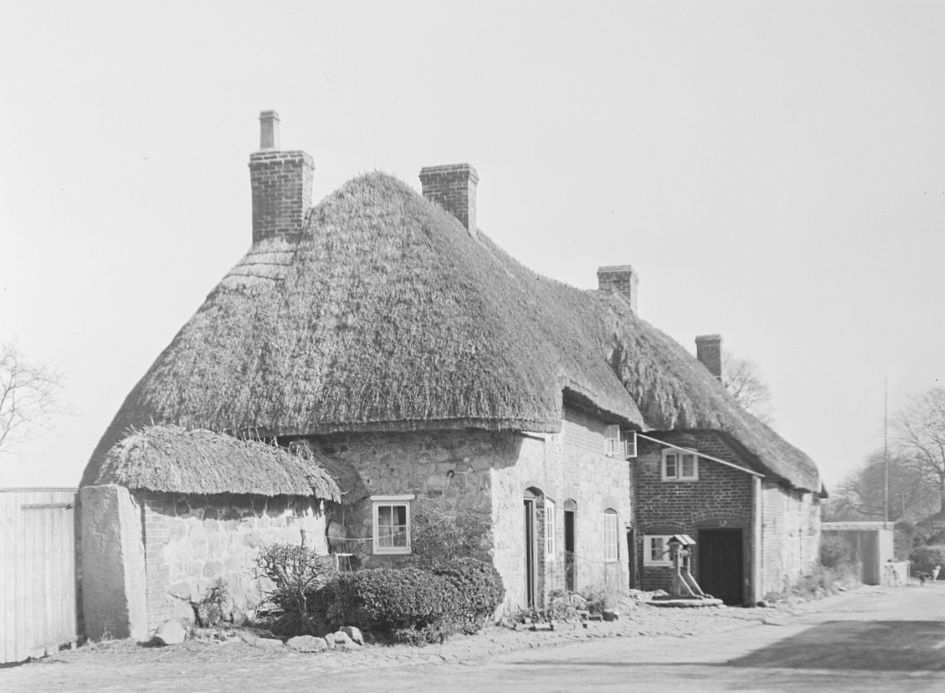
Sewing from home
The rapid distribution of sewing machines around the UK had enormous cultural and social impacts. Fast Fashion was born as the time taken to produce new clothes was cut dramatically; the blazer we mentioned earlier would now take less than an hour to produce.
Urban women entered the workforce en masse, as many of them worked from home to produce garments for clothing companies. This cut costs for the textile industry. As a result, the phrase ‘cottage industry’ became less connected with rural crafts, and instead was associated with crowded urban tenement blocks, filled with women working for the garment industry.
MERL P DX263 PH1/O/203
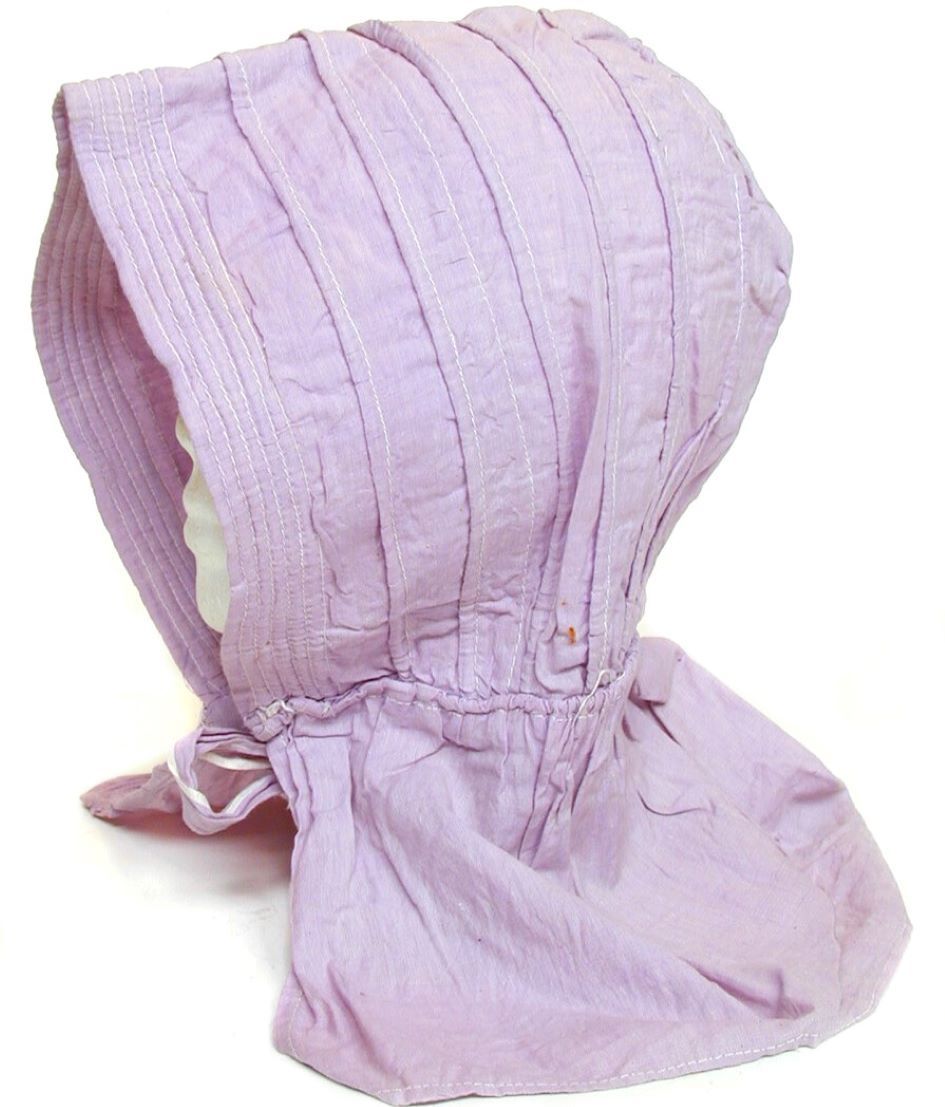
High fashion, low wages
When the sewing machine was first introduced, fears arose that it might threaten the jobs of tailors and dressmakers, in the same way the threshing machine had jeopardised the careers of farm labourers. However, this was not the case as garment production did not involve a finite amount of work. Instead, the volume of clothes produced for sale saw a dramatic increase.
This explosion of British fashion culture in the late 19th century was not accompanied by a rise in wages for garment workers. The ‘piece rate’ for clothes fell as companies tried to undercut each other and appeal to buyers.
One woman who spoke to social investigator Clementina Black reported that even though she made five aprons per hour, her profit each week was only seven shillings. This equates to only £20 in today’s money and, according to the National Archives, was the daily wage for a skilled tradesman.
Machine sewn bonnet, MERL 77/297
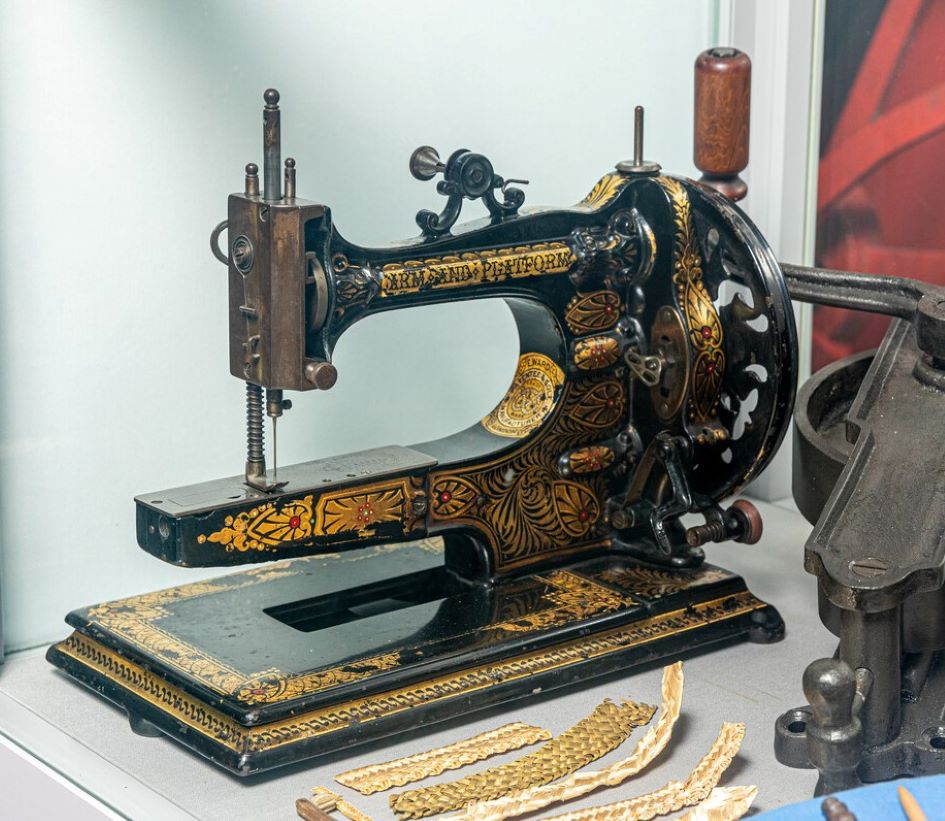
The origin of the sweatshop
The term ‘sweatshop’ derives from the 19th century clothing industry, as tailoring shops would assign contracts to garment workers via agents known as ‘sweaters’. The phrase ‘sweated industry’ came to represent a working environment where employees were forced to work through inhuman working conditions for little pay. The use of sewing machines for clothes production was foremost among these.
The usual ‘sweating’ garment culture predominantly exploited women within sewing factories. It included workers waiting overnight for new orders to come in, so they could work on them immediately. Food and drink were given at exorbitant prices, from which the sweater would profit. Workers also had to pay for expensive lodging and live in highly unsanitary conditions. These environments were hotbeds for the spread of smallpox and scarlet fever.
The ‘arm and platform’ machine pictured was commonly used within garment factories.
MERL 81/63
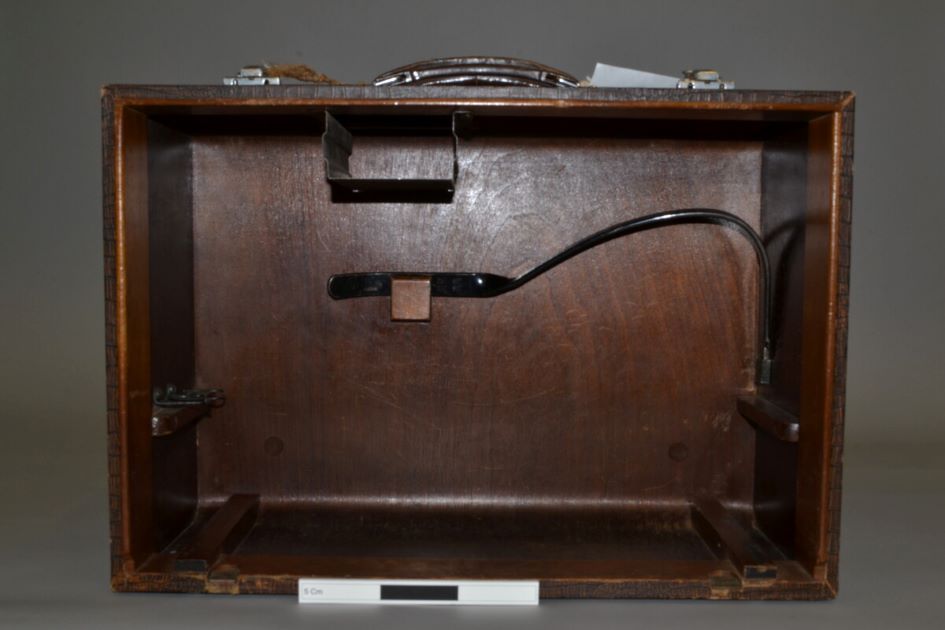
The first minimum wage
The dreadful working conditions for women employed by the garment industry resulted in a nationwide social movement fighting against this injustice. For example, the Fabian society was formed in 1884 with the Anti-Sweating League following in 1906.
The League was directly focused on shutting down sweatshops in the UK for good. Nancy Astor, who would later become the country’s first female MP, was a founding member. Their campaign led to the 1909 Trade Boards Act, the first act which legally enforced a minimum wage. The Act specifically applied to four industries, two of which—tailoring and machine lace making—revolved around garment making. This demonstrates the sewing machine’s impact on the first UK minimum wage provision.
This sewing machine case was used by a seamstress working in a factory in Nottingham.
MERL 2011/78/6
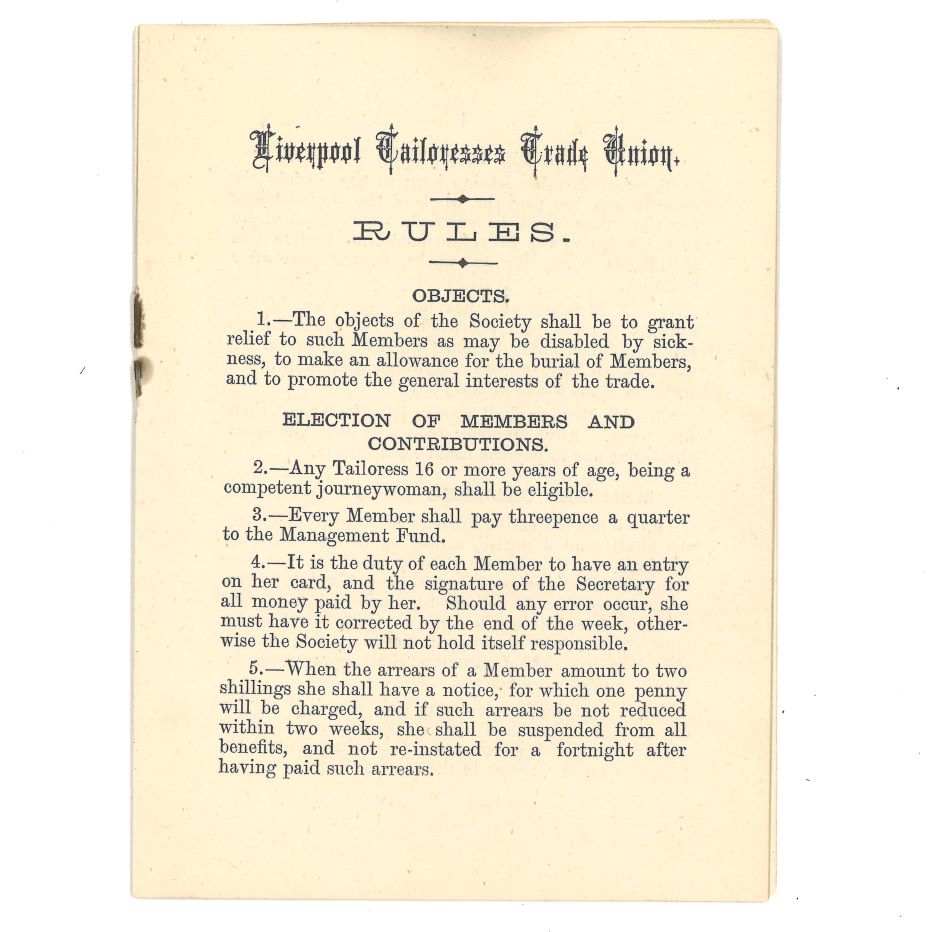
Clementina Black and suffrage
Arguably the most active and outspoken defender of women’s working rights at this time was Clementina Black, a political activist and socialist. Inspired by riots in Trafalgar Square in 1886, Black was appalled by the low wages paid to textile workers. She founded the Women’s Trade Union Association in 1889 and later played a key role within the Women’s Industrial Council. The Council would send female investigators to shed light on the worst sweatshops, and Black was frequently involved with this. Regional unions, such as the Liverpool Tailoresses’ Trade Union, received support from the WIC.
Knowing that the most assured protection of women’s rights was the vote, Black met with Prime Minister Asquith in 1910 to introduce female suffrage. The bill failed, but it laid the foundation for suffrage in 1917.
WIC/B/14, courtesy of LSE library
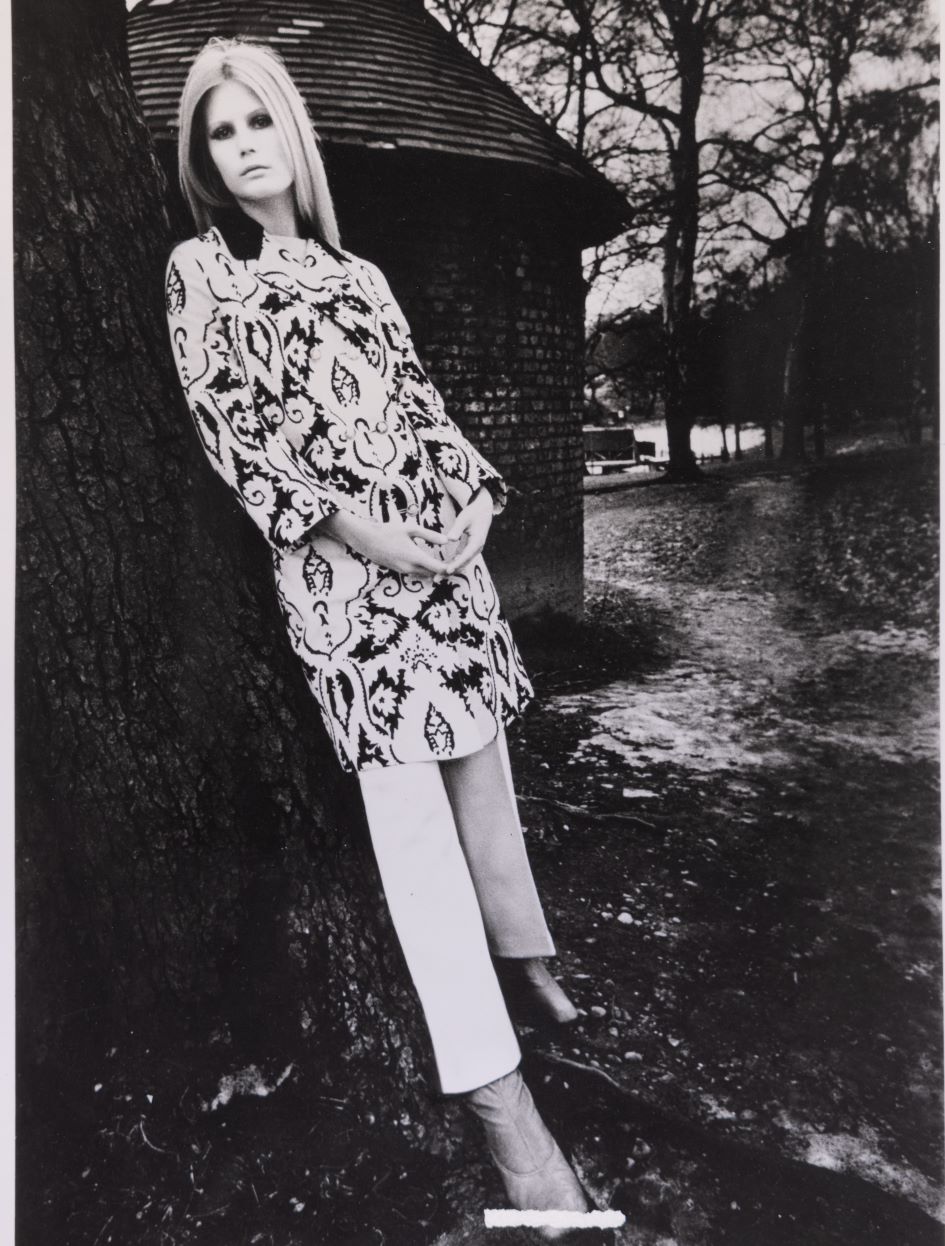
Modern fast fashion
Thus far we have examined the social change which protected the rights of UK workers from the oppression of fast fashion. However, the desire for designer clothes at affordable prices continued throughout the decades; this mid 20th century model is showing off rainwear named ‘Style Craven’. Fast fashion has flourished even further in the last ten years, with social media platforms such as Instagram encouraging rapidly changing trends in clothing.
In order to circumvent UK labour laws, the production of fast fashion garments has been exported overseas, particularly to Asian countries where the cost of labour is much lower and workers’ protections are looser. The Walk Free foundation estimates that there are 40 million slaves in the world today. Many of them are involved in garment production.
P PF PH2/1/430 P.R.O Mary Phillips

Exporting human rights issues
Poverty wages, forced overtime, dangerous working conditions, physical and sexual abuse, and repression of unions are all issues for garment workers in Asian countries who fuel the fast fashion industry. At times, their health and even their lives are at risk.
In April 2013, a garment factory in Dhaka, Bangladesh collapsed, killing 1,100 people and making it the world’s worst industrial accident for 30 years. The factory supplied UK retailers and all workers except garment workers had been evacuated from the building due to safety concerns.
This was far from an isolated incident, with 1800 Bangladeshi textile workers dying in factory fires between 2005 and 2013. Deaths from silicosis are also widespread due to the sandblasting process for distressed jeans, which can be dangerous if carried out without proper ventilation.
Creative Commons, credit lamtheboo
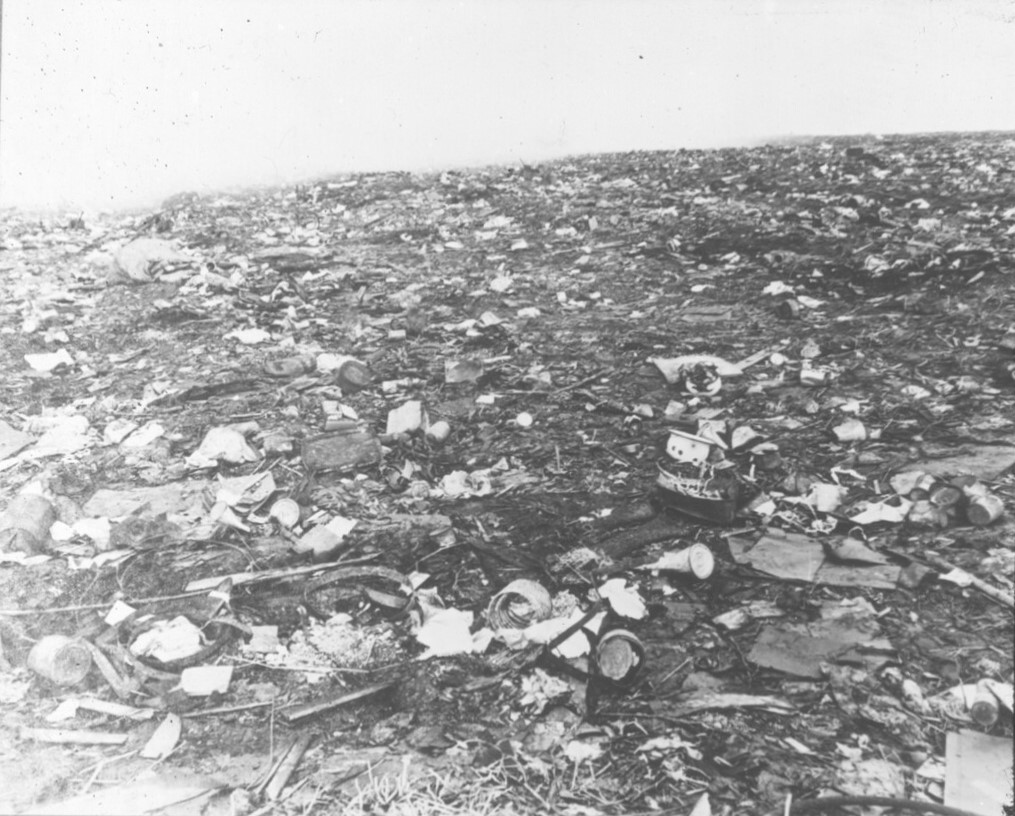
A climate culprit
Fast fashion has a staggering impact on climate change, with 10% of all global carbon emissions resulting from the garment industry. 1.2 billion tons of greenhouse gases came from fast fashion in 2015, more than the impact of the airline and maritime shipping industries combined.
Water pollution and water wastage are also serious concerns, with toxic dyes causing particular issues when allowed to drain into water supplies.
The huge volume of cheap clothes thrown away is unsustainable, with over 8 million tons going to landfill in the USA each year. Synthetic fibres such as polyester – which the fast fashion industry uses more than any other – can take up to 1000 years to decompose. This CPRE photograph demonstrates the disproportionate effect that rubbish tipping has had on the UK countryside throughout the 20th century.
SR CPRE PH1/2/45
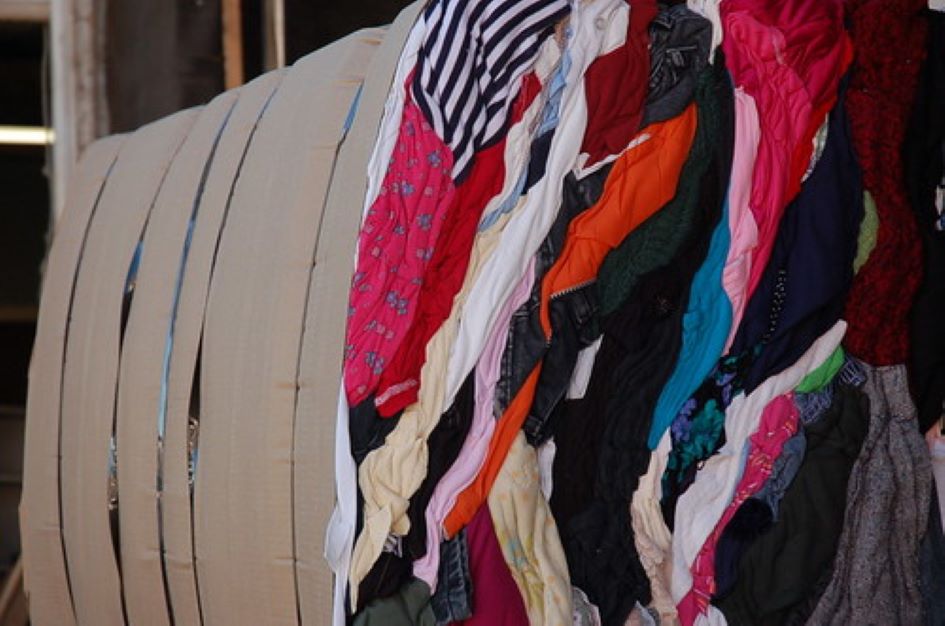
Environmental injustice
Environmental justice is the concept that our actions should not have disproportionate environmental impacts on low and middle income countries. Fast fashion fails at this as 90% of global garment production takes place in these countries. It is their water and air being polluted.
Even initiatives which claim to re-use and recycle often do more harm than good. Every year in the USA, 500,000 tons of used, cheap clothes are exported back to poorer countries in ‘bales’ to be sold second hand. Even if they are sold, they typically become landfill soon after.
Creative Commons, credit Zelda Go Wild
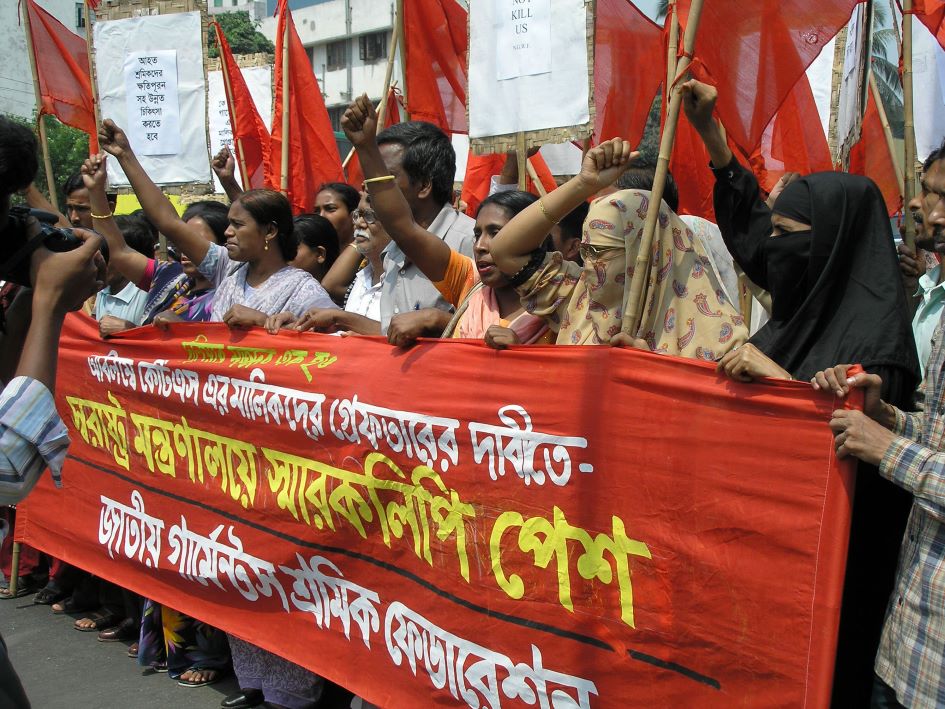
Labour Behind the Label
Labour Behind the Label seeks to improve the lives of garment workers around the world. Their Transparency Pledge forces retailers to publish details of their supply chains, so consumers can make an informed choice. In collaboration with the Clean Clothes Campaign, they established the Fashion Checker website to show which companies are paying their workers a living wage.
In addition, they intervene in specific cases of worker mistreatment. For example, in November 2020, Burmese migrant workers were sacked after trying to form a union. This was in response to working twelve hours a day on illegally low wages. Following pressure from Labour Behind the Label, Tesco and Starbucks (two companies for whom the workers made products) agreed to pay them compensation.
Bangladeshi workers in 2007, credit LBTL and CCC

Environmental solutions
Addressing the environmental side of fast fashion is going to be essential to both slowing global warming and reducing landfill all over the world.
Science has a role to play. The use of sustainable fibres can reduce waste – for example Modal fabric is made from beech trees (pictured) and can be made with a carbon neutral process. It also requires less water than polyester synthetic fabrics.
Governments also need to be involved all around the world. Notably, Rwanda, Tanzania and Uganda have raised taxes on second hand clothes imports. Western governments could also legislate on companies, by ensuring that retailers can’t claim environmental sustainability unless a set of standards are adhered to.
Cliford Tandy Collection, P TAN PH5/8/4/56

What can I do?
Purchasing clothes from retailers who are open about their supply chains can help ensure workers are getting a good deal. Keeping an eye out for the Fairtrade stamp can aid with this, as clothes manufactured with Fairtrade cotton come with the promise that the farmer has received a fair payment.
On the environmental side, the most straightforward thing we can do is to purchase newly made clothes as little as possible. Buying from second-hand stores, or mending your own clothes, will help reduce demand for fast fashion and lessen the environmental burden. Making and altering clothes does not just protect the environment, it also acts as a creative outlet and ensures outfits look exactly as you desire them.
Here we have The MERL’s very own Rhi Smith modelling an English Rose dress she made from a charity shop quilt.
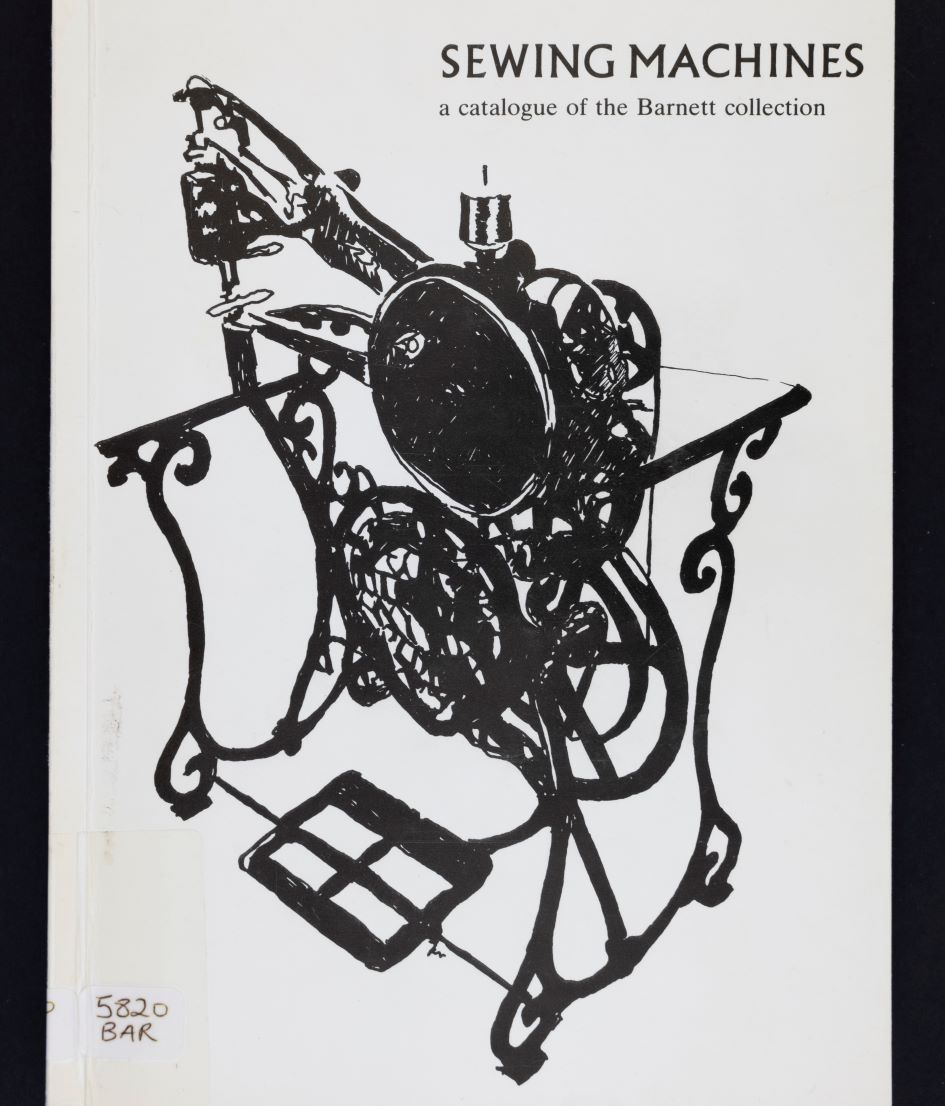
Further reading
Gregory, Martin, ‘Superseding the Seamstress — The Sewing Machine, from Invention to Mass Production in a Generation’ The International Journal for the History of Engineering and Technology 84:2
Aßländer, Michael, ‘Sweated Labor as a Social Phenomenon: Lessons from the 19th Century Sweatshop Discussion’ Journal of Business Ethics 170:2 (November 2019) pp. 315-328
Black, Clementina, ‘London’s Tailoresses’ The Economic Journal 14:56 (1904) pp. 555-567
Joy, Sherry, Venkatesh, Wang, Chan, ‘Fast Fashion, Sustainability, and the Ethical Appeal of Luxury Brands’ Fashion Theory 16:3 (21/04/2015) pp. 273-295
Peters, Li, Menzen, ‘The need to decelerate fast fashion in a hot climate – A global sustainability perspective on the garment industry’ Journal of Cleaner Production Vol. 295 (May 2021)
Bruzzi, Gibson (eds.) Fashion Cultures Revisited: Theories, Exploration and Analysis (Routledge 2013)
Barnett, James, Sewing machines : a catalogue of the Barnett collection / with an introduction and commentary by J.N. Barnett (University of Reading 1982)
MERL LIBRARY--5820-BAR